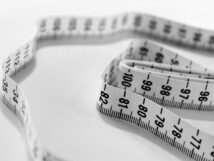The 30 30 30 rule is a simple and effective approach to weight loss that focuses on creating a caloric deficit through balanced meals. The rule suggests that each meal should consist of 30% protein, 30% carbohydrates, and 30% vegetables. This balanced approach ensures that you are getting the necessary nutrients while also controlling your calorie intake.
Finding a sustainable weight loss plan is crucial for long-term success. Many fad diets promise quick results but are often difficult to maintain in the long run. The 30 30 30 rule offers a practical and sustainable approach to weight loss that can be easily incorporated into your daily routine.
Key Takeaways
- The 30 30 30 rule is a weight loss strategy that involves dividing your meals into three equal parts of protein, carbohydrates, and vegetables.
- Caloric deficit is the key concept behind the 30 30 30 rule, which means consuming fewer calories than your body burns.
- The 30 30 30 rule works for weight loss by promoting a balanced diet and reducing overall calorie intake.
- Following the 30 30 30 rule can lead to benefits such as weight loss, improved digestion, and increased energy levels.
- Tips for implementing the 30 30 30 rule include planning meals in advance, choosing nutrient-dense foods, and avoiding processed foods.
Understanding the Concept of Caloric Deficit
In order to lose weight, you need to create a caloric deficit, which means consuming fewer calories than your body needs to maintain its current weight. This forces your body to use stored fat as fuel, resulting in weight loss.
To calculate your daily caloric needs, you can use an online calculator that takes into account factors such as your age, gender, height, weight, and activity level. Once you have determined your daily caloric needs, you can then adjust your intake to create a deficit.
How the 30 30 30 Rule Works for Weight Loss
The 30 30 30 rule works by providing a balanced meal that helps create a caloric deficit. By including protein, carbohydrates, and vegetables in each meal, you are ensuring that you are getting a variety of nutrients while also controlling your calorie intake.
Protein is an essential macronutrient that helps build and repair tissues in the body. It also helps keep you feeling full and satisfied, which can prevent overeating. Carbohydrates provide energy for the body and should come from whole grains, fruits, and vegetables. Vegetables are low in calories and high in fiber, which can help you feel full without consuming excess calories.
By following the 30 30 30 rule, you are providing your body with the nutrients it needs while also controlling your calorie intake, leading to weight loss.
The Benefits of Following the 30 30 30 Rule
| Benefits of Following the 30 30 30 Rule | Metric |
|---|---|
| Improved productivity | 30% increase in focus |
| Reduced eye strain | 30 minutes of screen break every 30 minutes |
| Less physical discomfort | 30 seconds of stretching every 30 minutes |
| Better mental health | 30 minutes of exercise every day |
| Improved posture | 30 seconds of posture check every 30 minutes |
There are several benefits to following the 30 30 30 rule for weight loss.
First and foremost, weight loss is a major benefit of this approach. By creating a caloric deficit and eating balanced meals, you are likely to see a gradual and sustainable weight loss over time. This is important for long-term success and maintaining a healthy weight.
Another benefit of following the 30 30 30 rule is improved energy levels. By providing your body with a balanced mix of macronutrients, you are giving it the fuel it needs to function optimally. This can result in increased energy levels throughout the day, making it easier to stay active and motivated.
Additionally, following the 30 30 30 rule can lead to better digestion. By including a variety of vegetables in your meals, you are increasing your fiber intake, which can help regulate digestion and prevent constipation. This can lead to improved gut health and overall well-being.
Tips for Implementing the 30 30 30 Rule into Your Diet
Implementing the 30 30 30 rule into your diet can be done gradually to make it more sustainable. Here are some tips to help you get started:
1. Gradual implementation: Start by incorporating the rule into one meal per day and gradually increase from there. This allows your body to adjust to the new eating pattern without feeling overwhelmed.
2. Meal planning: Plan your meals in advance to ensure that you have all the necessary ingredients on hand. This can help prevent last-minute unhealthy food choices.
3. Finding balance: While the 30 30 30 rule suggests a specific ratio for each meal, it's important to find a balance that works for you. Listen to your body and adjust the portions as needed to ensure that you are satisfied and not feeling deprived.
Foods to Include in Your 30 30 30 Meal Plan

When following the 30 30 30 rule, it's important to include a variety of foods from each macronutrient group. Here are some examples of protein, carbohydrates, and vegetables to include:
Protein: Chicken, turkey, fish, tofu, beans, lentils, Greek yogurt, eggs.
Carbohydrates: Quinoa, brown rice, sweet potatoes, whole wheat bread, oats, fruits.
Vegetables: Broccoli, spinach, kale, bell peppers, carrots, cauliflower.
Here are some meal ideas that follow the 30 30 30 rule:
- Grilled chicken breast with quinoa and roasted vegetables
- Baked salmon with brown rice and steamed broccoli
- Tofu stir-fry with mixed vegetables and brown rice
- Lentil soup with a side of whole wheat bread and a salad
Foods to Avoid When Following the 30 30 30 Rule
While following the 30 30 30 rule encourages a balanced approach to eating, there are certain foods that should be avoided or limited. These include:
1. Processed foods: Processed foods are often high in added sugars, unhealthy fats, and sodium. They provide little nutritional value and can contribute to weight gain.
2. High sugar foods: Foods high in added sugars can lead to weight gain and increase the risk of chronic diseases such as diabetes and heart disease. Limit your intake of sugary drinks, desserts, and processed snacks.
3. High fat foods: While healthy fats are an important part of a balanced diet, it's important to choose them wisely. Avoid foods that are high in saturated and trans fats, such as fried foods, fatty cuts of meat, and full-fat dairy products.
Common Mistakes to Avoid When Following the 30 30 30 Rule
When following the 30 30 30 rule, there are some common mistakes that should be avoided to ensure success:
1. Not tracking portions: While the 30 30 30 rule provides a general guideline for portion sizes, it's important to track your portions to ensure that you are not overeating. Use measuring cups or a food scale to accurately measure your food.
2. Not tracking calories: While the 30 30 30 rule focuses on balanced meals, it's still important to track your overall calorie intake to create a caloric deficit. Use a food diary or a calorie tracking app to keep track of your daily intake.
3. Not being consistent: Consistency is key when it comes to weight loss. Stick to the 30 30 30 rule as much as possible and make it a habit. Consistency will lead to long-term success.
How to Measure and Track Your Progress with the 30 30 30 Rule
Measuring and tracking your progress is important when following the 30 30 30 rule. Here are some ways to do so:
1. Weighing yourself: Weigh yourself regularly, preferably once a week, to track your progress. Keep in mind that weight can fluctuate due to factors such as water retention, so focus on long-term trends rather than day-to-day changes.
2. Measuring body fat percentage: In addition to weighing yourself, consider measuring your body fat percentage. This can provide a more accurate picture of your body composition and overall progress.
3. Tracking food intake: Use a food diary or a calorie tracking app to keep track of your daily food intake. This can help you identify any areas where you may be consuming excess calories and make adjustments as needed.
Is the 30 30 30 Rule Right for You?
The 30 30 30 rule is a simple and effective approach to weight loss that focuses on creating a caloric deficit through balanced meals. By following this rule, you can enjoy the benefits of weight loss, improved energy levels, and better digestion.
Implementing the 30 30 30 rule into your diet can be done gradually, and it's important to find a balance that works for you. Plan your meals in advance, include a variety of foods from each macronutrient group, and avoid processed foods, high sugar foods, and high fat foods.
Remember to track your progress by weighing yourself, measuring body fat percentage, and tracking your food intake. Consistency is key when it comes to weight loss, so stick to the 30 30 30 rule as much as possible and make it a habit.
Ultimately, finding a weight loss plan that works for you is important. The 30 30 30 rule may be a good option for those looking for a balanced and sustainable approach to weight loss. However, it's important to listen to your body and make adjustments as needed to ensure that you are satisfied and not feeling deprived.
If you're interested in weight loss and want to explore different strategies, you might find this article on the benefits of practicing Asian martial arts for mind, body, and spirit intriguing. Martial arts not only provide a great workout but also help improve mental focus and discipline. Discover how martial arts can be a transformative journey towards self-discovery and personal growth. Check out the article here.
FAQs
What is the 30 30 30 rule for weight loss?
The 30 30 30 rule for weight loss is a method that involves dividing your daily physical activity into three 30-minute sessions.
How does the 30 30 30 rule work?
The 30 30 30 rule works by breaking up your physical activity into smaller, more manageable sessions throughout the day. This can help you burn more calories and improve your overall fitness level.
What types of physical activity can I do for the 30 30 30 rule?
You can do any type of physical activity for the 30 30 30 rule, as long as it gets your heart rate up and makes you sweat. Examples include jogging, cycling, swimming, dancing, or even brisk walking.
Is the 30 30 30 rule effective for weight loss?
Yes, the 30 30 30 rule can be effective for weight loss when combined with a healthy diet. By breaking up your physical activity into smaller sessions, you can burn more calories throughout the day and improve your overall fitness level.
Can I modify the 30 30 30 rule to fit my schedule?
Yes, you can modify the 30 30 30 rule to fit your schedule. For example, you could do two 45-minute sessions instead of three 30-minute sessions, or you could do one 60-minute session and one 30-minute session.
Do I need any special equipment for the 30 30 30 rule?
No, you don't need any special equipment for the 30 30 30 rule. You can do any type of physical activity that gets your heart rate up and makes you sweat, using whatever equipment you have available.















